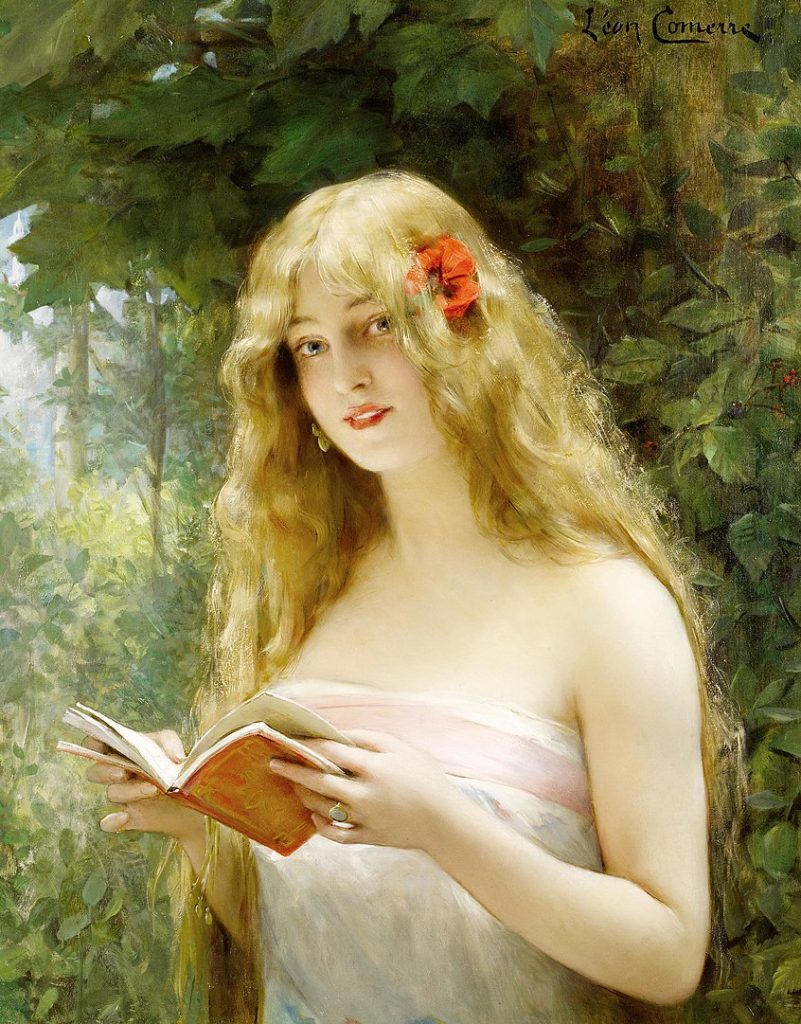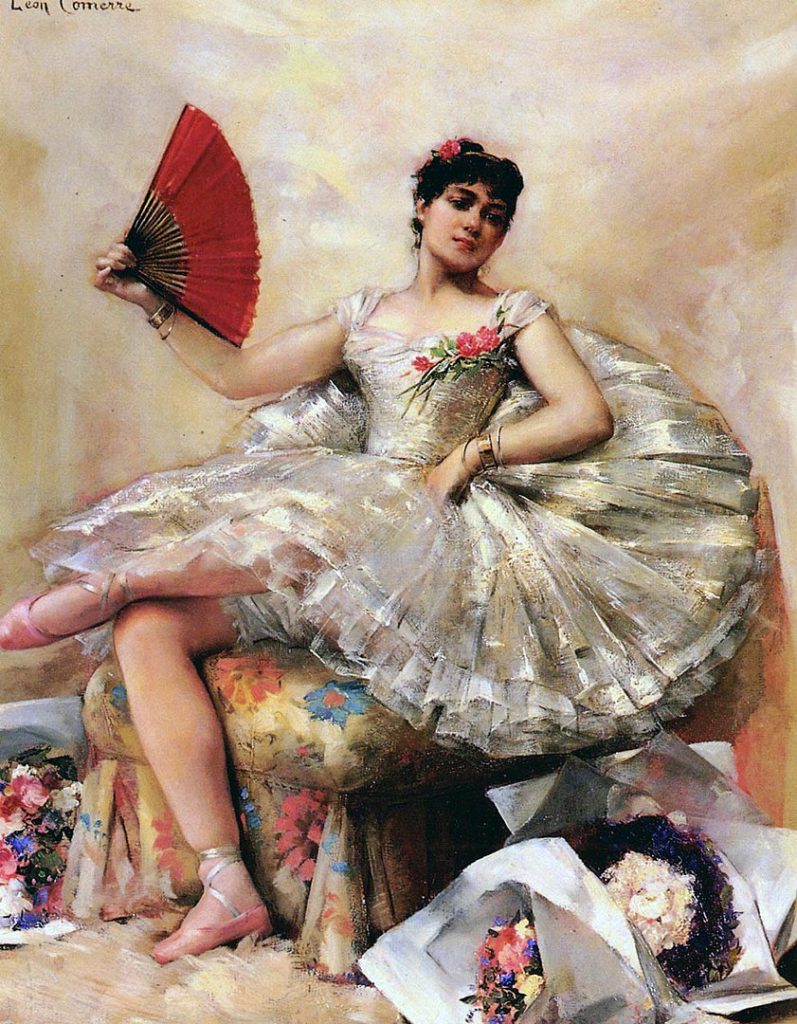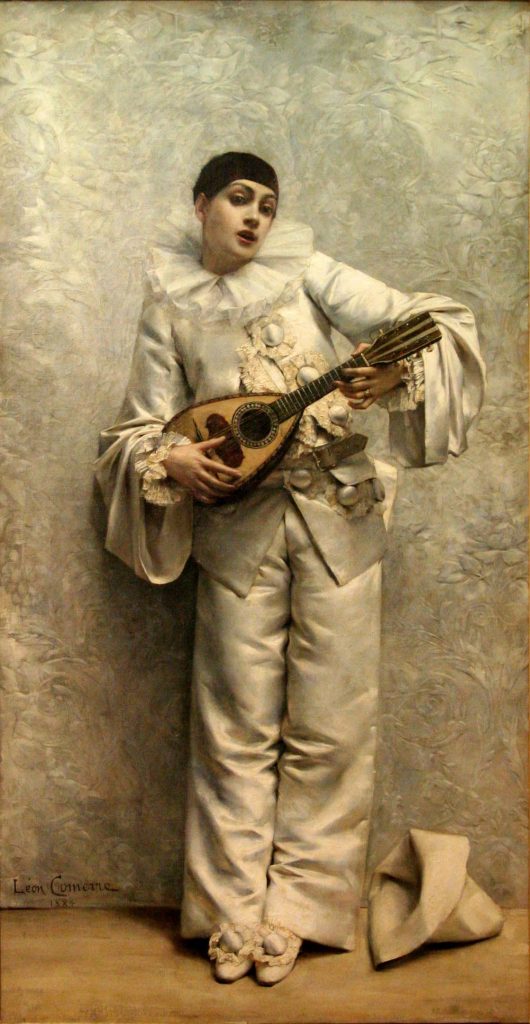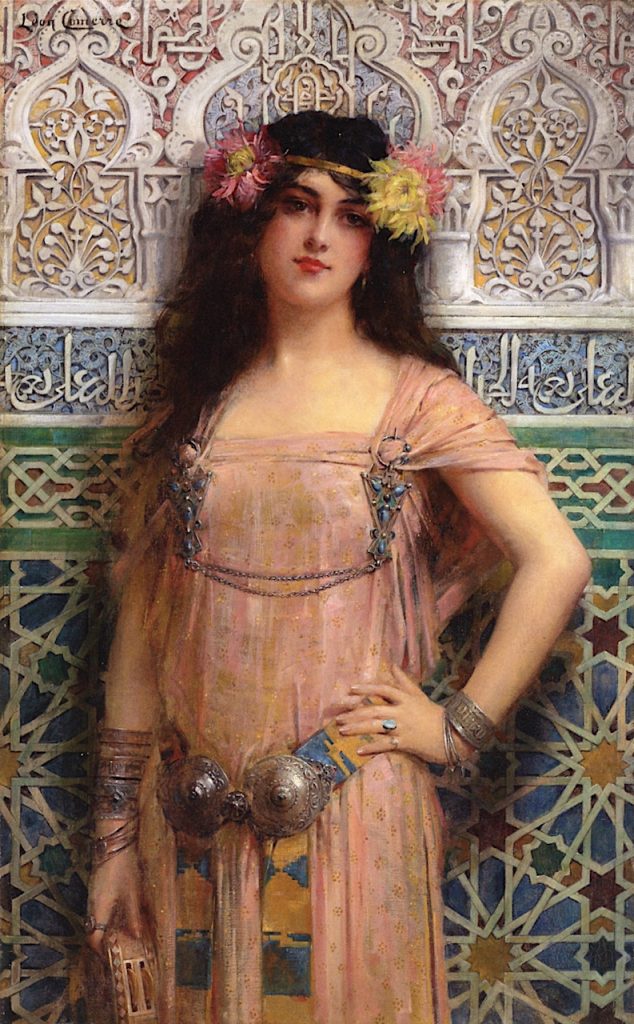
Léon François Comerre, a prominent French academic painter of the 19th and early 20th centuries, was born on October 10, 1850, in Trélon, France. His life unfolded against the backdrop of a transformative period in art, marked by shifts from academic traditions to the burgeoning currents of symbolism and orientalism.
Comerre began his artistic journey at the École des Beaux-Arts in Lille, where he studied under Alphonse Colas. His early years were characterized by a dedication to academic principles, and he quickly gained recognition for his technical skill and proficiency. In 1871, he entered the studio of Jean-Léon Gérôme in Paris, a renowned academic painter, further solidifying his commitment to the academic tradition.

The artist’s career took a decisive turn when he exhibited at the Paris Salon for the first time in 1874. His early works, such as “Portrait of Mlle. Comerre” and “Love in a Village,” reflected his mastery of portraiture and historical subjects. Comerre’s ability to capture the nuances of expression and his meticulous attention to detail garnered attention, laying the foundation for his future successes.
Comerre’s exploration of historical and mythological themes aligned with the prevailing academic tastes of the time. His work often drew inspiration from classical mythology, incorporating elements of fantasy and symbolism. “The Abduction of Psyche” and “Oedipus and the Sphinx” exemplify his skill in infusing traditional subjects with a touch of drama and emotion.
As the 19th century progressed, Comerre’s work evolved in response to the changing currents in art. The rise of symbolism and orientalism captured his imagination, leading to a departure from strict academic conventions. He embraced the exotic and fantastical, drawing inspiration from Eastern cultures and mythology. This shift is evident in works like “The Snake Charmer” and “The Maharajah.”

Comerre’s fascination with the Orient extended beyond his art. He traveled extensively, exploring North Africa, Egypt, and the Middle East. These journeys enriched his visual vocabulary, influencing the portrayal of oriental themes in his paintings. The vibrant colors, intricate patterns, and exotic settings became integral elements of his artistic repertoire.
The artist’s ability to seamlessly transition between academic, symbolic, and orientalist styles contributed to his success. Comerre’s paintings were widely acclaimed, earning him numerous awards and medals. He received the Legion of Honor in 1889, cementing his status as a respected figure in the French art establishment.
Portraiture remained a significant aspect of Comerre’s career, and he gained a reputation for capturing the essence of his subjects. His portraits adorned the walls of aristocrats, celebrities, and dignitaries, including Russian royalty. Comerre’s portrait of Tsarina Alexandra Feodorovna attested to his ability to portray not only the physical likeness but also the personality and grace of his subjects.
In the early 20th century, Comerre’s work continued to evolve. The artist embraced a more impressionistic approach, experimenting with looser brushstrokes and a lighter palette. His later works, such as “The Blue Mosque” and “The Evening Star,” demonstrated a willingness to adapt to the changing artistic landscape while retaining the atmospheric quality that defined his earlier pieces.
Léon François Comerre’s career spanned a period of significant transformation in the art world. His journey from strict academicism to the realms of symbolism and orientalism showcased his versatility and adaptability as an artist. Comerre’s contributions, both in portraiture and thematic exploration, left an enduring legacy in French art.

The artist passed away on February 20, 1916, but his influence persisted through his extensive body of work. Léon François Comerre’s ability to navigate the shifting tides of art movements, coupled with his technical skill and artistic curiosity, secured his place as a noteworthy figure in the rich tapestry of 19th and early 20th-century French painting.






